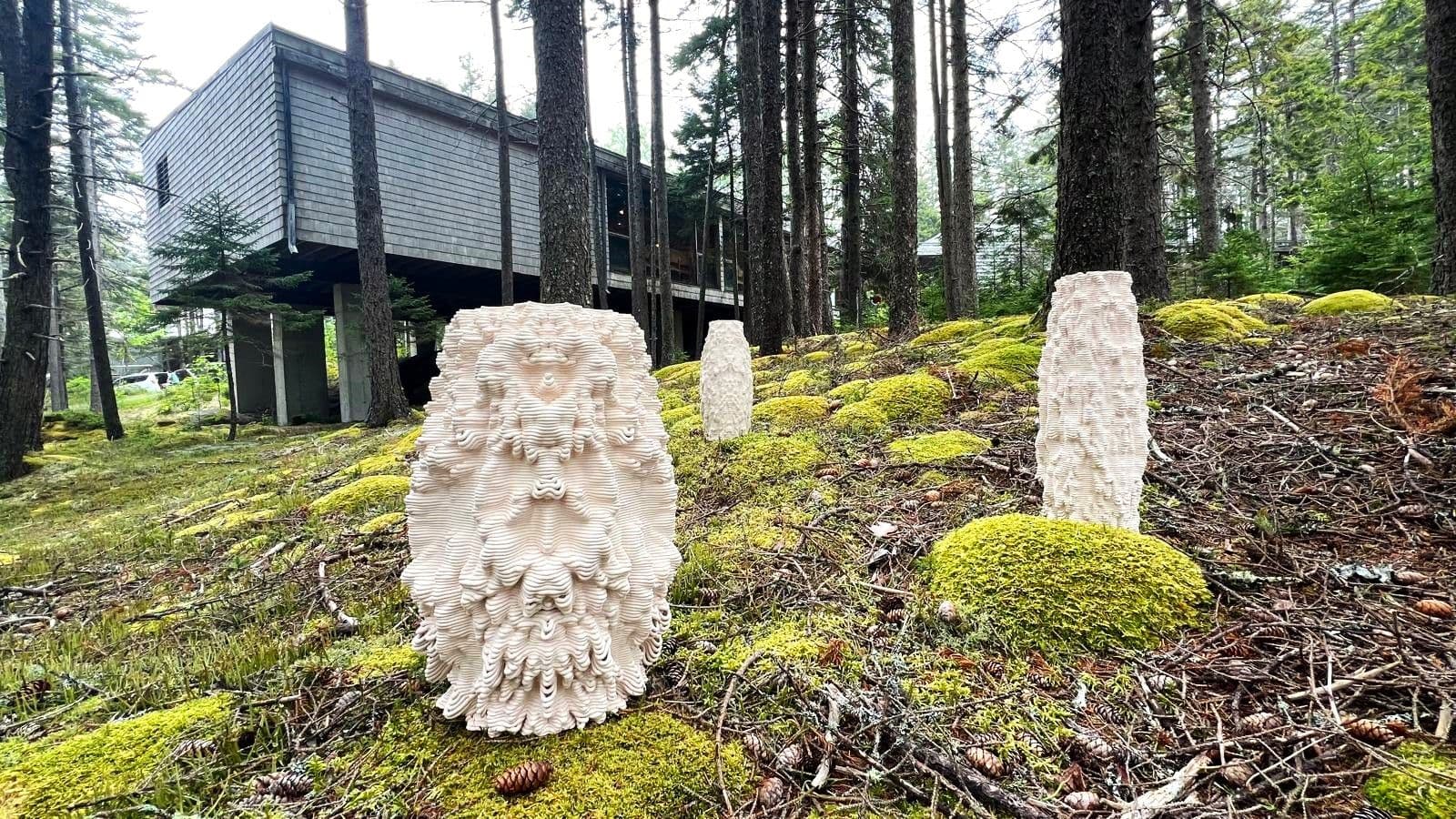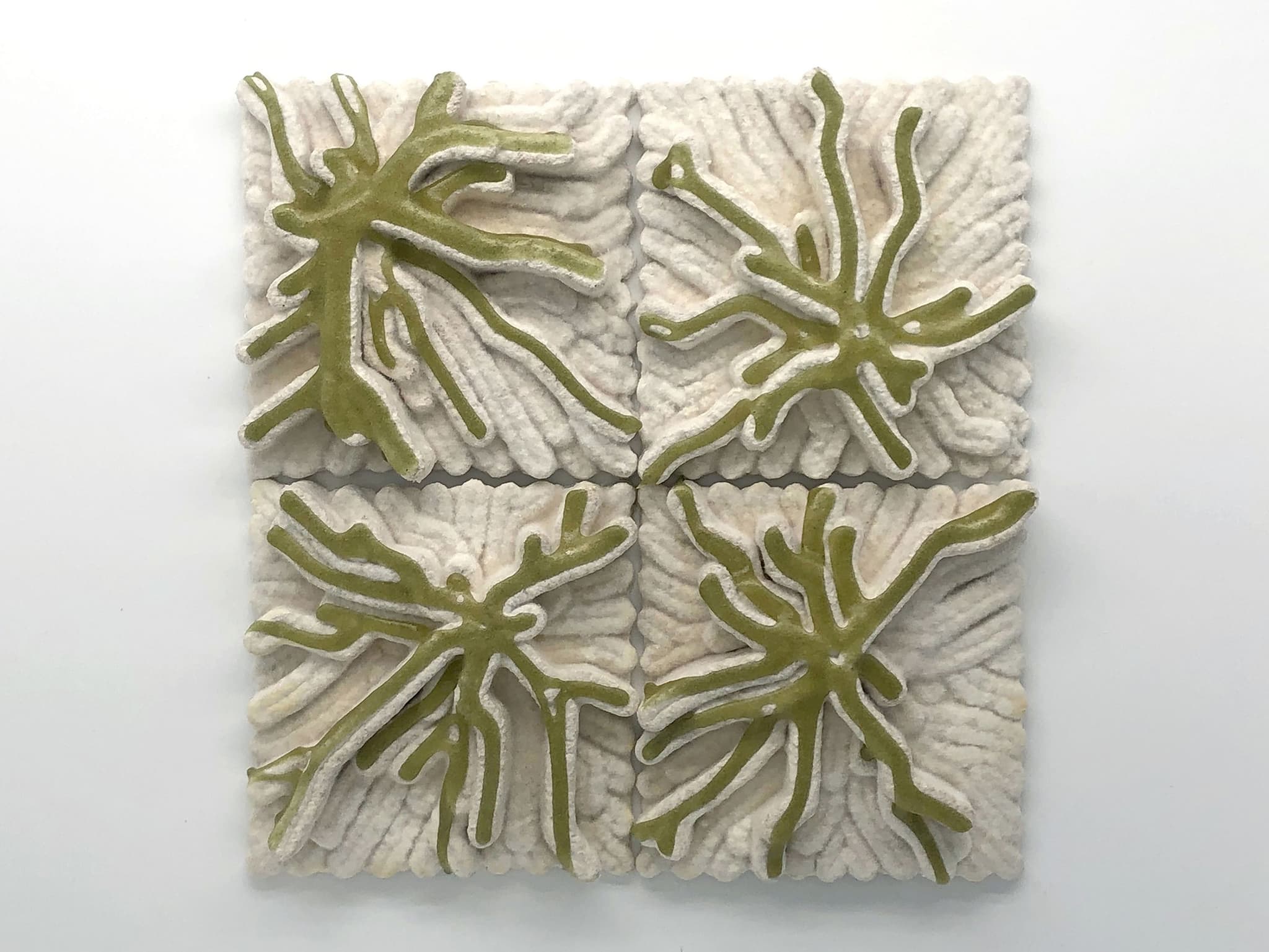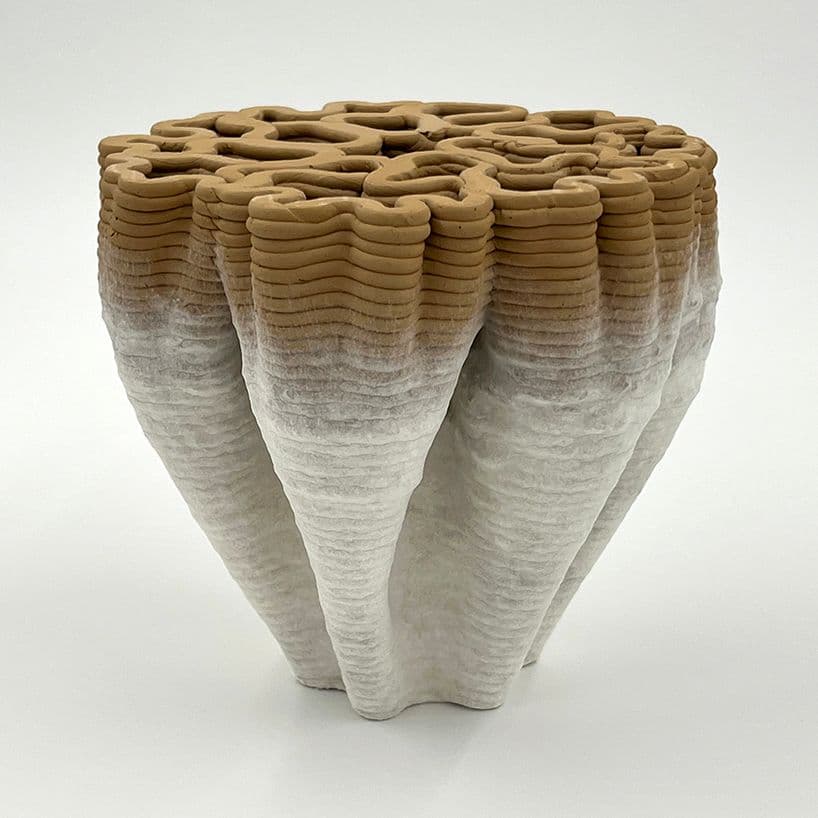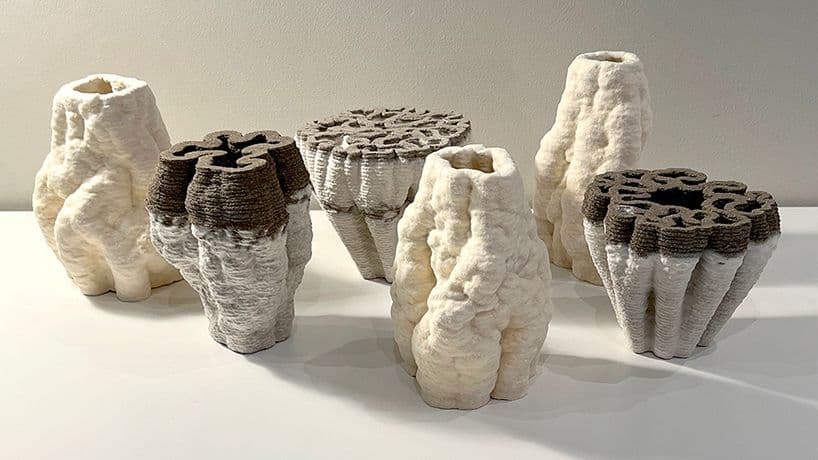1. Could you describe how your process of 3D printing mycelium-based composites works, and how it compares to traditional manufacturing methods in terms of environmental impact and material properties?
Over the past 15 years, our work has evolved through the integration of computational design, sensing technologies, and additive manufacturing in support of biodesign practices. We refer to this evolving methodology as bio-digital craft, a term that embodies our commitment to blending traditional craftsmanship with cutting-edge digital technologies and biological processes. It represents a multidisciplinary approach, where digital tools and biological systems coalesce, creating a new hybrid space for design. For us, it is a way of merging the precision and versatility of digital fabrication with the organic, evolving qualities of living materials. We focus on the interactions between digital design algorithms, biomaterials, and manual craftsmanship, producing functional designs that embody artisanal traditions while advancing science and regenerative practices.
2. What specific advantages do these living systems offer over conventional materials in terms of sustainability, durability, and functionality?
Our approach is grounded in scientific research, computational design, and cultural heritage, integrating fieldwork, environmental data, and craftsmanship. Living organisms shift design from passive, extractive materials to active, regenerative systems. They grow using renewable resources, often from waste, and require no high heat, toxic chemicals, or intensive mining—often grown locally in closed-loop systems that reduce carbon footprint.
In terms of durability, products are designed to decompose or last long, promoting a circular economy. Functionally, algae can photosynthesize (purifying air, generating oxygen), and bacteria can respond to environmental cues (releasing scent, pigment, antimicrobials). Mycelium offers insulation, fire resistance, and acoustic dampening, making it ideal for construction. These materials interact and evolve, enabling responsive, symbiotic architectures.

3. Can you explain some of the key waste materials you use in your process, and how they are transformed into usable and sustainable design materials?
With mycelium, which binds and digests lignocellulosic waste, the choice of substrate—defining texture, strength, growth rate, and ecology—is key. We follow a circular approach by sourcing from local agriculture, food, and forestry industries, supporting bioregional economies and reducing transport emissions. We also integrate by-products from manufacturing like sawdust, cardboard, textiles, and coffee grounds. These are cleaned, sterilized, and processed into fibers or powders to be colonized by mycelium.
4. How are biological pigments produced and applied to your materials, and how do they compare to traditional synthetic dyes in terms of environmental impact?
Biological pigments, used in biotextiles, enhance aesthetics while supporting circular, non-toxic systems. Synthetic dyes are toxic, high-energy, fossil-derived, and non-biocompatible. Our pigments come from bacteria, fungi, algae, and plants, cultivated on low-cost or waste substrates. Extracted with water- or alcohol-based methods, they avoid toxic solvents and support a more sustainable production model.

5. How do your materials help mitigate the extraction of raw materials and promote a more circular economy?
We employ a Closed Loop strategy in material development—minimizing inputs and maximizing reuse. Spent mycelium can be composted, and feedstocks like straw and hemp are diverted from landfill or incineration. Our processes avoid mining, deforestation, and high-energy inputs. Materials are designed for disassembly and biodegradation, allowing them to re-enter natural or industrial cycles post-use.
6. How do 3D printing and robotic biofabrication enhance the customization and scalability of your bio-based materials, particularly in architectural applications?
These technologies are co-evolutionary systems, aligning material behavior with design intent. They enable mass customization without high-waste practices, integrating computational design and biologically derived materials for precision at scale. Robotic biofabrication manages viscosity, shrinkage, and growth behavior, crucial for living materials. This allows the creation of larger structural components while maintaining biological integrity and minimizing manual labor.

7. How do you optimize material yield and reduce waste throughout the biofabrication process?
Our principle of material stewardship considers the entire lifecycle. We eliminate virgin material extraction through upcycling, growing biological materials on demand, which prevents overproduction. Understanding each material's lifecycle enables yield optimization, value regeneration, and environmental impact reduction.
8. How do you evaluate the environmental and ecological impact of your bio-based materials compared to traditional materials?
We use Life Cycle Assessment to measure energy use, carbon emissions, material circularity, and ecological agency. Our biomaterials are grown at room temperature, use local biomass, and rely on robotic precision, cutting down energy and waste. While drying requires energy, it is less than traditional high-energy processes. We design for biodegradability and reuse, closing the loop and reducing post-use burden.

9. How do you scale the production of living materials while preserving the integrity of biological processes and sustainability?
Scaling requires preserving biodesign values. Living materials need specific conditions—managed via modular biofabrication systems and climate-controlled environments. We prioritize low-impact substrates and passive environmental controls, avoiding industrial shortcuts. Robotic tools allow precise, repeatable shaping, and we aim to collaborate with local growers and biotech labs to decentralize production, lowering transport emissions and encouraging community participation. Scaling here means growing networks of care and knowledge.

10. What is the future for bio-digital craft and biofabricated materials in architecture and product design?
The future lies in integrating living materials into education, policy, and public awareness, not just advancing technology but reshaping our material relationships. This philosophical shift—from control to collaboration with living systems—requires embracing Slow Design, where time and evolution are valued. By doing so, we can redefine comfort, permanence, and design ethics across industries, promoting ecological reciprocity and regenerative systems.








